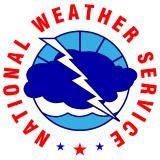Southeast Climate Monthly Webinar: March 28, 2023
This past month brought a roller coaster of temperature changes to the Southeast, beginning with unseasonably warm weather during the first week of March, followed by cooler weather with subfreezing temperatures during the middle of the month, then a return to unseasonably warm weather at the end of the month. Precipitation was below average across the region, with many locations receiving less than half of their expected amounts. However, recent rains have helped minimize drought expansion, except in parts of the Florida Peninsula and a few other areas, which continue to be drier than normal and where drought is slowly expanding and intensifying. La Niña has ended, and ENSO-neutral conditions are expected to continue this spring and summer. Streamflows were moving towards below normal this past month, but recent rains have improved conditions and there are some areas of flooding reported. Streamflows are typically at their highest levels of the year for most of the interior Southeast.
Looking Ahead: Warm and wet conditions are expected over the next two weeks. Over the next three months, temperatures are expected to be above average across the region, with equal chances of above- and below-normal precipitation projected for most of the region. River flood risk over the next 3 months is expected to be near what is typical for the interior Southeast river systems, where river flooding is more likely this time of year. The Florida Peninsula is expecting below-normal flood risk over the next 3 months due to drier-than-normal conditions in this current dry season.
Check out this month’s special presentation, “La Niña Scorecard and What to Expect this Spring/Early Summer” from David Zierden.
About This Webinar
The Southeast Climate monthly webinar series is hosted by the Southeast Regional Climate Center, the National Integrated Drought Information System (NIDIS), and the NOAA National Weather Service. These webinars provide the region with timely information on current and developing climate conditions such as drought, floods, and tropical storms, as well as climatic events like El Niño and La Niña. Speakers may also discuss the impacts of these conditions on topics such as agriculture production, water resources, wildfires, and ecosystems.






